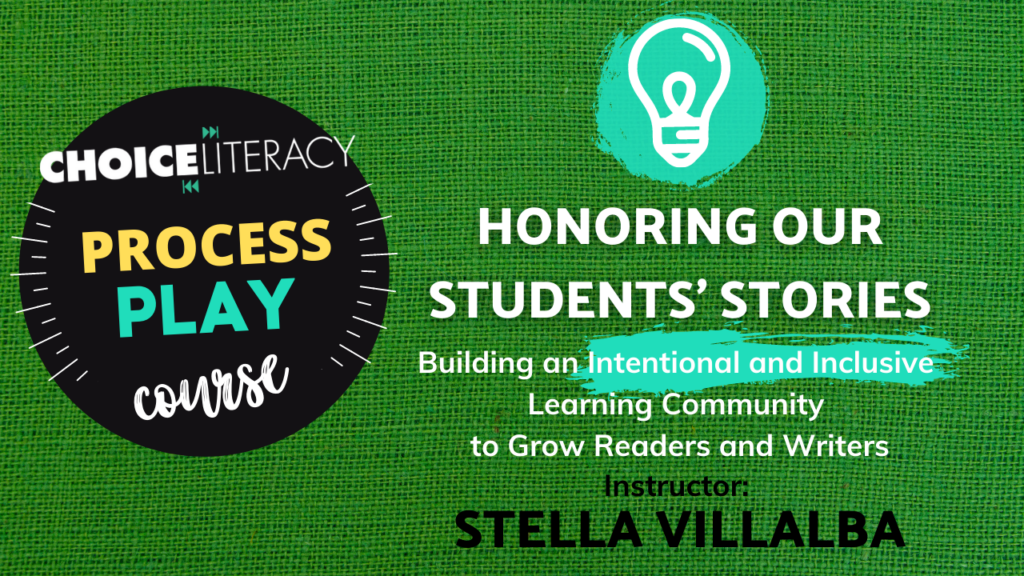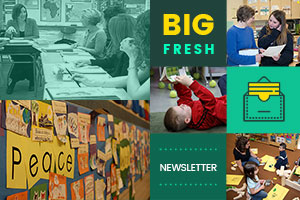Once you replace negative thoughts with positive ones, you’ll start having positive results.
—Willie Nelson
Asset-Based Approaches
During the first few weeks of school, one of my responsibilities was to screen the students who are new in our district and may qualify for English Language Learner supports. For years, I have grappled with the terminology around students who speak, understand, and are learning additional languages; they are sitting across from me with a set of skills that I wish I had! Somehow screening them to provide support feels like a deficit approach for a child with multiple languages.
It was in this capacity that I met Amina, a kindergarten student with a knowledge and understanding of an additional language—one I’d never even heard of. One of the parts of the screening assessment involves asking students to retell a story using picture cues. I show them three pictures and read the alphabetic text that relays the story, and students are to tell that story back to me. Amina listened to the story, and her smile indicated her appreciation of the pictures and their meaning.
When it was her turn to tell me the story, Amina did not use complete sentences. She did not use transition phrases, and she did not name the characters or specifically mention the details of the setting that would have increased her score on the assessment.
However, she wove in backstory and predictions based on the pictures. She enriched the sequence of events with the vibrancy of her imagination, and she found and communicated connections to her own life. The story she told back to me was only remotely related to the one I’d read, but it was full of images, character motivation, and Amina’s internalization and enrichment of what could or should happen in the worlds of the two-dimensional characters. I loved her story much more than the one I’d read from the administration manual.
But she received no bonus points for any of that elaboration. Her points would have accrued through the construction of subjects and predicates, matching verb tenses, and subject-verb agreement. She would have also gotten points for using transitional phrases to indicate time and its passage. The animation and imaginative quality of her story were not part of the scoring indicators.
I share Amina’s story because my focus this year is on asset-based approaches to students. I had to score her on what she left out, as opposed to what she put in, and I wish there was a different way to do that. Unfortunately, in a norm-referenced or criteria-based assessment, that was the case, but you can bet that I will be working with Amina in the future, finding ways to capitalize on, leverage, and honor the amazing storytelling capacity and imagination she has that doesn’t shine through via a screening assessment.
How often does assessment shed light on what students can’t do rather than celebrate what they can do? There are times when scoring manuals guide me to fill in boxes that reflect only a dimension of who a student is and what they know. Wherever I can, whenever there’s space, I work to make room for the anecdotes and additional notes that shine more light on the broader expanses that define, describe, and celebrate the people I teach.
This week we look at empowerment for students as readers and writers—plus more, as always.
Shine on!
Melanie Meehan
Featured Contributor
This month’s featured contributor is Melanie Meehan. Melanie has been the elementary writing and social studies coordinator in Simsbury, Connecticut, since 2012. Melanie wrote Every Child Can Write, published by Corwin Press in October 2019, and The Responsive Writing Teacher, co-written with Kelsey Sorum, published in March 2021. Connect with Melanie on Twitter @melaniemeehan1.

Join the Choice Literacy Book Club! Melanie Meehan selected the picture book Octopus Stew by Eric Velasquez as our November read. Grab a copy, and join the conversation using the hashtag #ChoiceLiteracyBookClub.
Dana Murphy suggests three ways to empower student choice in workshop and get more students to accept the invitations we offer. This article was first published in 2020.
It’s not an invitation if students are required to accept it. Franki Sibberson explains how engagement depends upon true choice and lots of options in her fifth-grade classroom. This article was first published in 2018.
UPCOMING NEW COURSE! We are getting ready to release Stella Villalba‘s new course Honoring Our Students’ Stories: Building an Intentional and Inclusive Learning Community.
 Stella Villalba teaches us how to discover, honor, and share student stories to create an inclusive learning community. With special attention to English learners, Stella walks educators through a process to intentionally honor the past and present of students to position all students to grow as readers and writers.
Stella Villalba teaches us how to discover, honor, and share student stories to create an inclusive learning community. With special attention to English learners, Stella walks educators through a process to intentionally honor the past and present of students to position all students to grow as readers and writers.

New members-only content is added each week to the Choice Literacy website. If you’re not yet a member, click here to explore membership options.
In this video, Dana Murphy confers with fifth grader Rebecca about her draft, and discuss what the heart of her story is.
In this encore article, Suzy Kaback thinks deeply about the concept of belonging as an essential part of building a school community.

The Deep Dive course Getting Organized for Literacy Coaching with Ruth Ayres is now available for free to Literacy Leader members. In this course, experienced literacy coaches unzip their bags to share what they carry into classrooms and open up their coaching notebooks to show you the pages and lessons they can’t live without. You’ll finish the course with sample calendars, templates, checklists, and insider tips for launching your coaching year with confidence and enthusiasm. The best time to get organized is now! (This course was created in 2019.)
Stella Villalba begins with a powerful question for educators to consider in order to begin dismantling systems that oppress marginalized communities.
In a Coaching Minute, Ruth Ayres shares the importance of setting a norm about presence. This is part of a series about professional learning norms.
Don’t forget our downloads! Stephanie Affinito guides us in transforming a coaching vision into a practical coaching menu so teachers can choose their ideal way to work with an instructional coach. Download a copy of a coaching menu.
Quote It:
Keep your face to the sunshine and you cannot see the shadow.
—Helen Keller
That’s all for this week!




